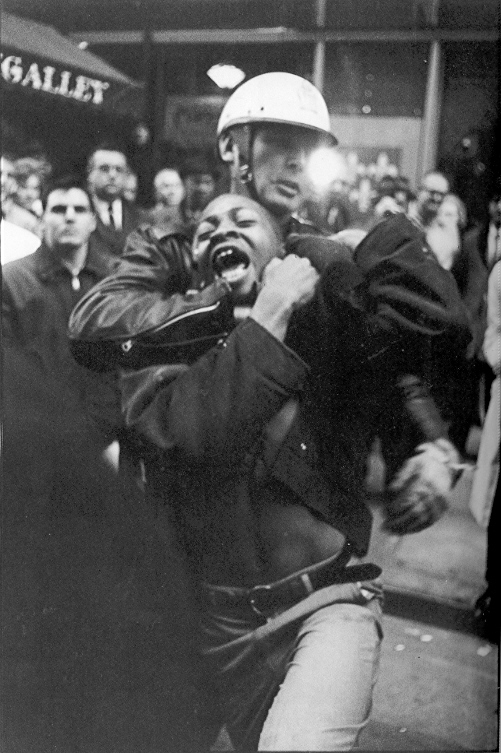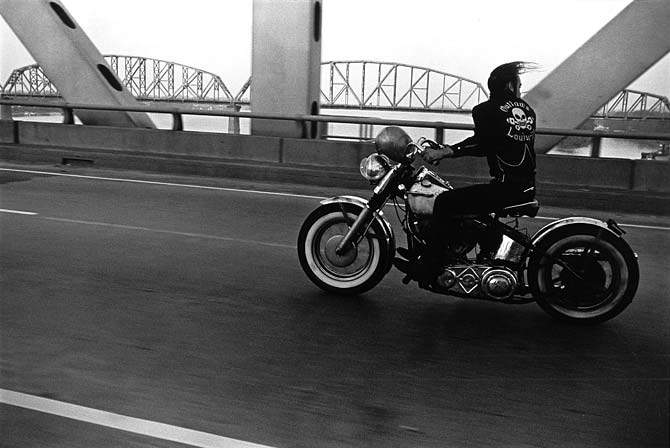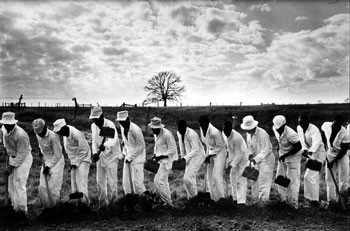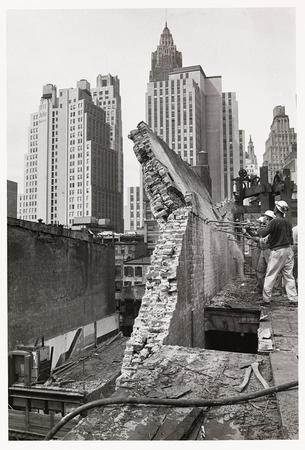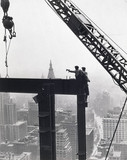This World Is Not My Home:
Danny Lyon Photographs
Davidson Gallery
2-16-2013 through 6-2-2013
Danny Lyon Checklist (as of 11-28-2012)
Danny Lyon Overview
Danny Lyon Biography
Civil Rights
In 1962, while studying history at the University of Chicago, Lyon drove to the segregated South and joined the Student Nonviolent Coordinating Committee (SNCC) as a photographer. He travelled with SNCC for two years, documenting the violence facing the student-led organization. A pioneering example of engaged photojournalism, Lyon’s immersion in the lives of Civil Rights activists offers a unique, often unguarded look at the strain and risk involved in the struggle for equality. Extraordinary works of art in their own right, these photographs create a complex portrait of an era and its actions and activists. – SBMA Section Panel Wall Text
“One of high school student Taylor Washington’s numerous arrests is immortalized as he yells while passing before me.” The photograph became the cover of SNCC’s photo book, The Movement, and was reproduced in the former Soviet Union in Pravda, captioned “Police Brutality USA.” – Danny Lyon, Memories of the Southern Civil Rights Movement, Foreword by Julian Bond. University of North Carolina Press, 1992.
Bikeriders
Among the most celebrated of all Danny Lyon’s photographs, are images from his Bikeriders series, which he made as a member of the Chicago Outlaws motorcycle club. His classic book of the same name, published in 1967, combines photographs with transcriptions from audio recordings that Lyon made of the group’s members. His goal was to “record and glorify the life of the American bikerider.” The gritty mix of realism and romanticism in the photographs propelled motorcycle counterculture into mainstream American consciousness. – SBMA Section Panel Wall Text
“I used to be afraid that when Angels became movie stars and Cal the hero of the book, the bikerider would perish on the coffee tables of America. But now I think that this attention doesn’t have the strength of reality of the people it aspires to know, and that as long as Harley-Davidsons are manufactured other bikeriders will appear, riding unknown and beautiful through Chicago, into the streets of Cicero.” – Danny Lyon Quote, A Gallery for Fine Photography, New Orleans, 1999
Prisoners
In 1967, Lyon applied to the Texas Department of Corrections for access to six of the state prisons, which he photographed intensely over a fourteen-month period. The result is a searing record of the Texas penal system, which is symbolic of incarceration everywhere. Lyon’s aim was to “make a picture of imprisonment as distressing as I knew it to be in reality.” He befriended many of the prisoners and has maintained contact with some of them ever since, forming relationships that have been among the most profound in his lifetime. – SBMA Section Panel Wall Text
In these prison pictures, no one is looking at the camera, really, or engaging with the photographer. They all look very spontaneous, nothing looks posed. In fact, there’s only one or two images where the subject is looking directly at the camera, and I think that has something to say about the culture in which the photos are taken. So this is an amazing interior look into these lives.
From another standpoint, look at the symmetry and the uniformity that these prisoners have. The parade of prisoners across the courtyard and up the steps in a single white line, the chain gang digging in one line of work, lines in the cafeteria—everything is regimented, everything is uniform, everything is laid out in grid patterns, even the dominoes, even the games they play, are linear and uniform. It’s really remarkable these little things the photographer can see within the scene to make them that much more interesting. – Jefferson Jackson Steele, Danny Lyon: Conversations With the Dead, Baltimore City Paper, 4-6-2011
Collages

Since the 1980s Lyon has been making photographic montages that combine diverse images and materials to produce new works. They are intimate objects that started out as efforts to intensify portraits, but ultimately transformed into productions that evoke the complex and intricate workings of personal memory. They often bring together diverse individuals from the artist’s life. – SBMA Section Panel Wall Text
Completed in 1983, What Hopes Have Perished with You My Son (In Memory of Johnnie Sanchez) features black-and-white childhood and adolescent photos of Sanchez, who died in a car crash in his early 20s, surrounded by color photos of his and other snow-covered gravesites in the small town of Bernalillo, N.M., where Lyon has outlived perhaps too many of his neighbors. – Arts and Culture Magazine, Houston, 5-17-2012
The Destruction of Lower Manhattan
In the summer of 1966 Lyon began to document the demolition of some sixty acres of predominantly nineteenth-century buildings below Canal Street in lower Manhattan. He photographed most of the buildings that were to be torn down to make way for the World Trade Center, as well as the workers involved in the demolition. The result was a distinctive series of images that have added resonance in the years following 9/11. Describing the project later, Lyon recalled: “I wanted to inhabit them [the buildings] with feeling and give them and their demise a meaning.” – SBMA Section Panel Wall Text
In The Destruction of Lower Manhattan, Lyon tells a story in which both buildings and people are protagonists. For a photographer, deriving drama from both the built and the human means taking a creative approach to scale, and—sometimes—rediscovering methods used by others.
Lyon’s image of wreckers knocking over a wall remarkably echoes Lewis W. Hine’s study of steelworkers assembling the girders of the Empire State Building thirty-seven years earlier. Their pictures tell opposite (or, better, complementary) halves of the story of ground clearing and construction, but the artists share a progressive vision of labor as history. – The Life and Death of Buildings, Princeton University Art Museum, 7-23-2011

